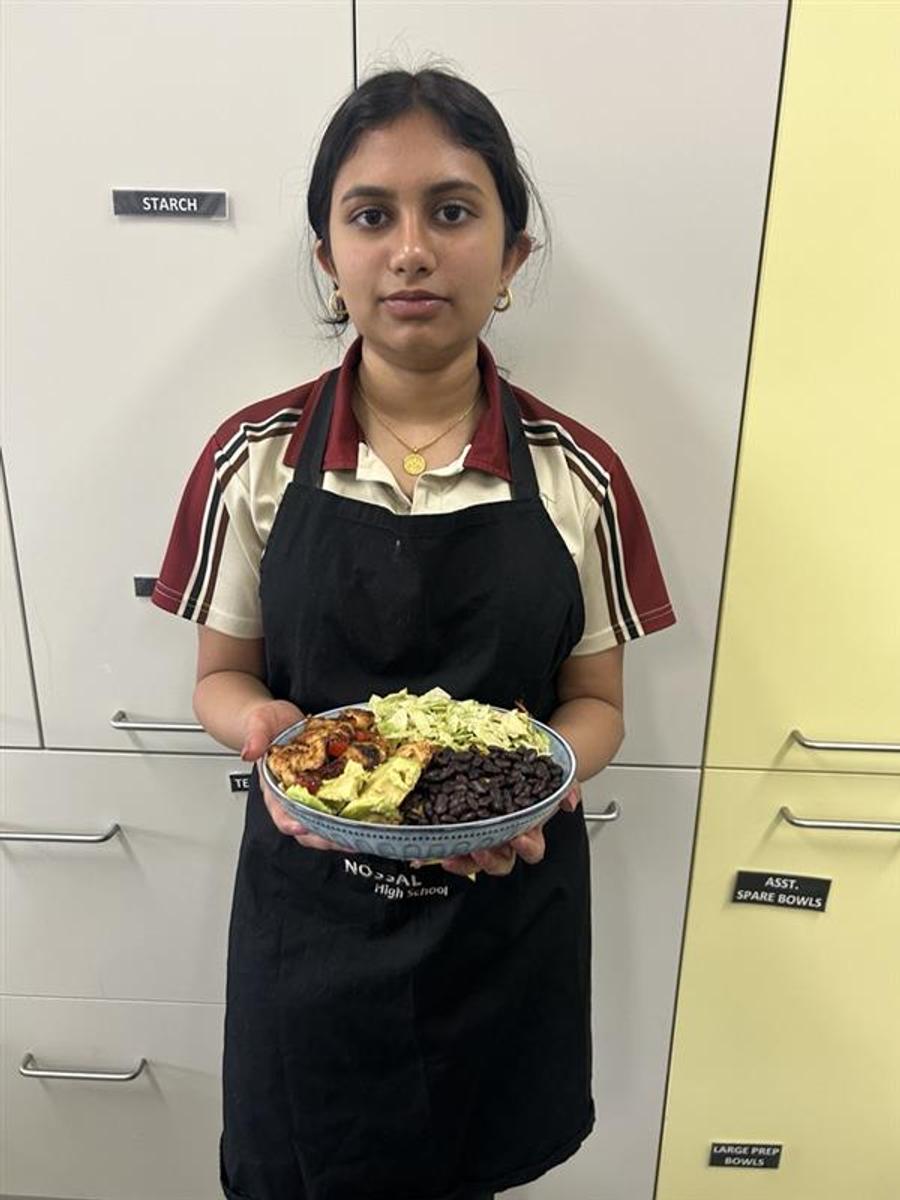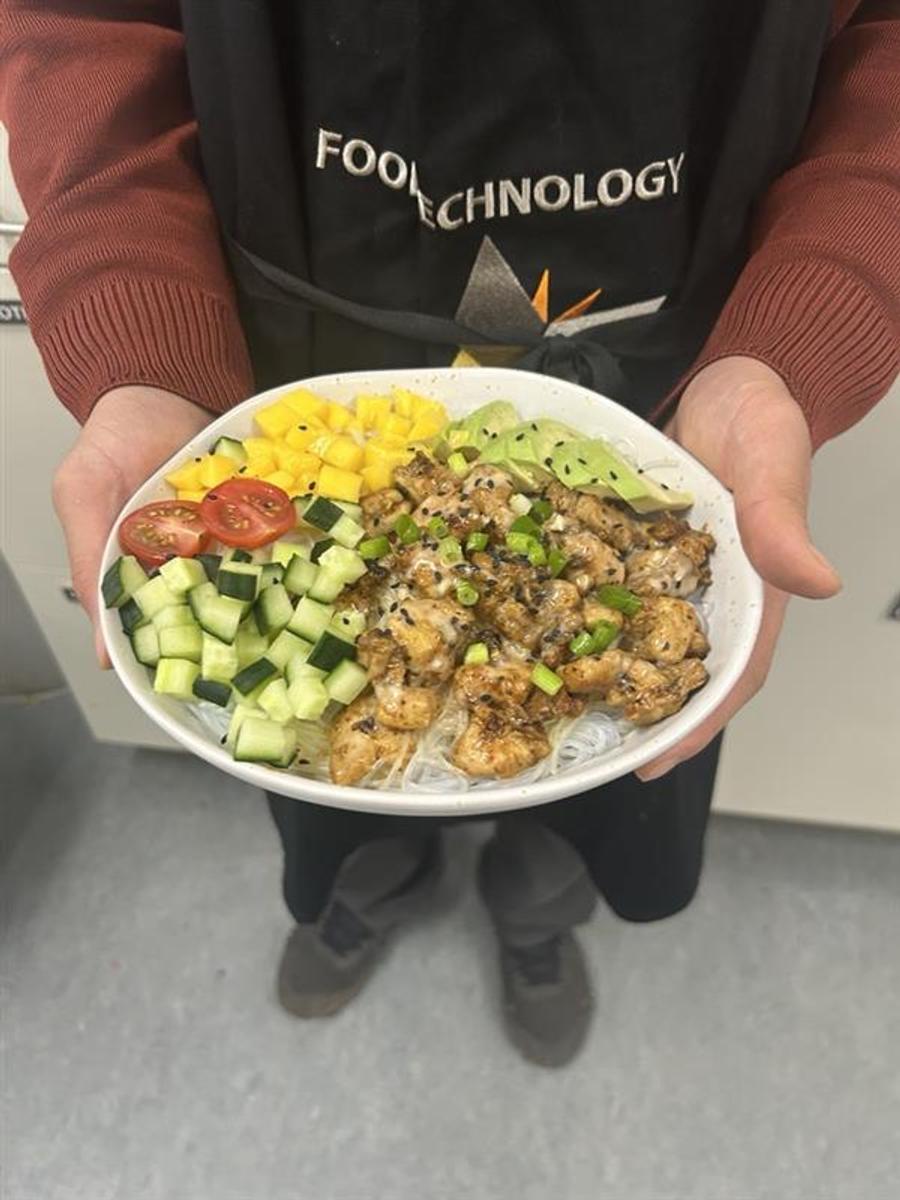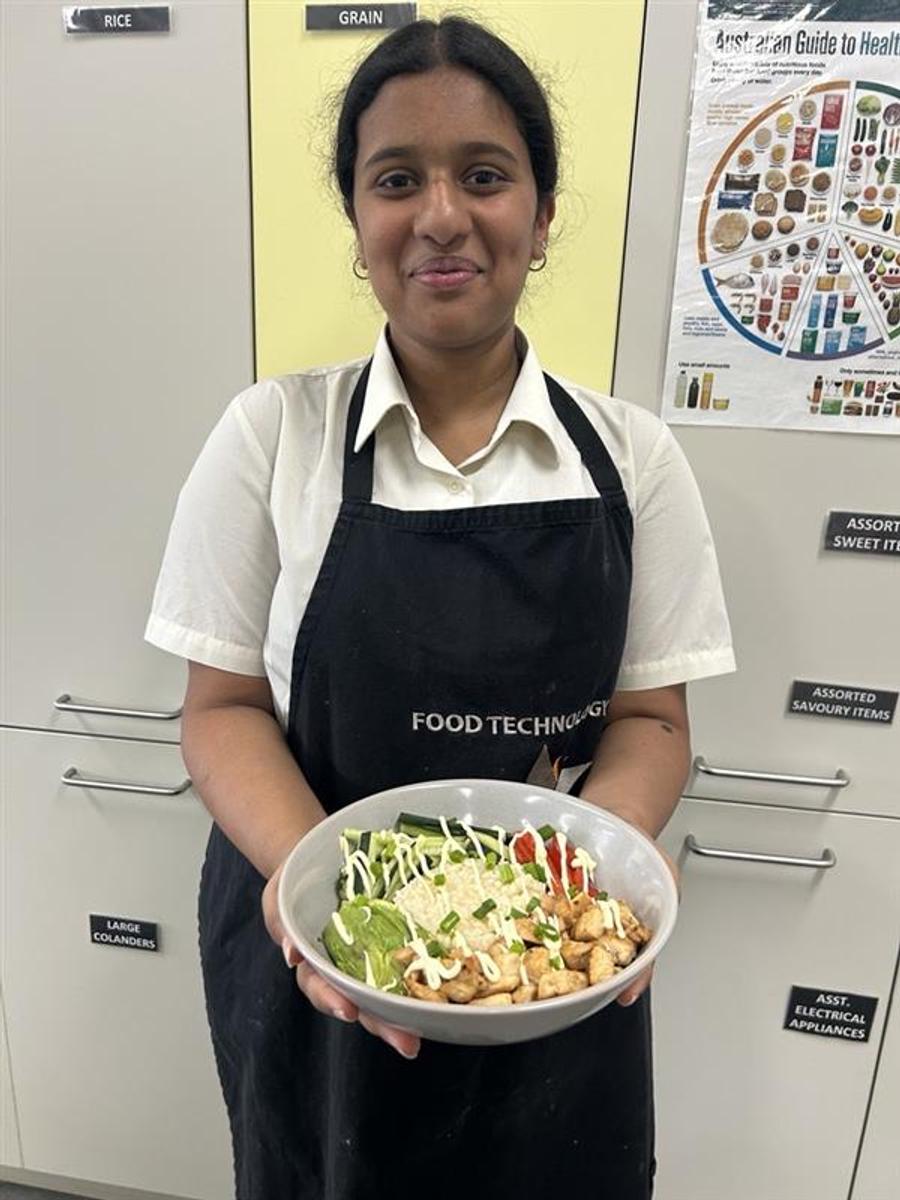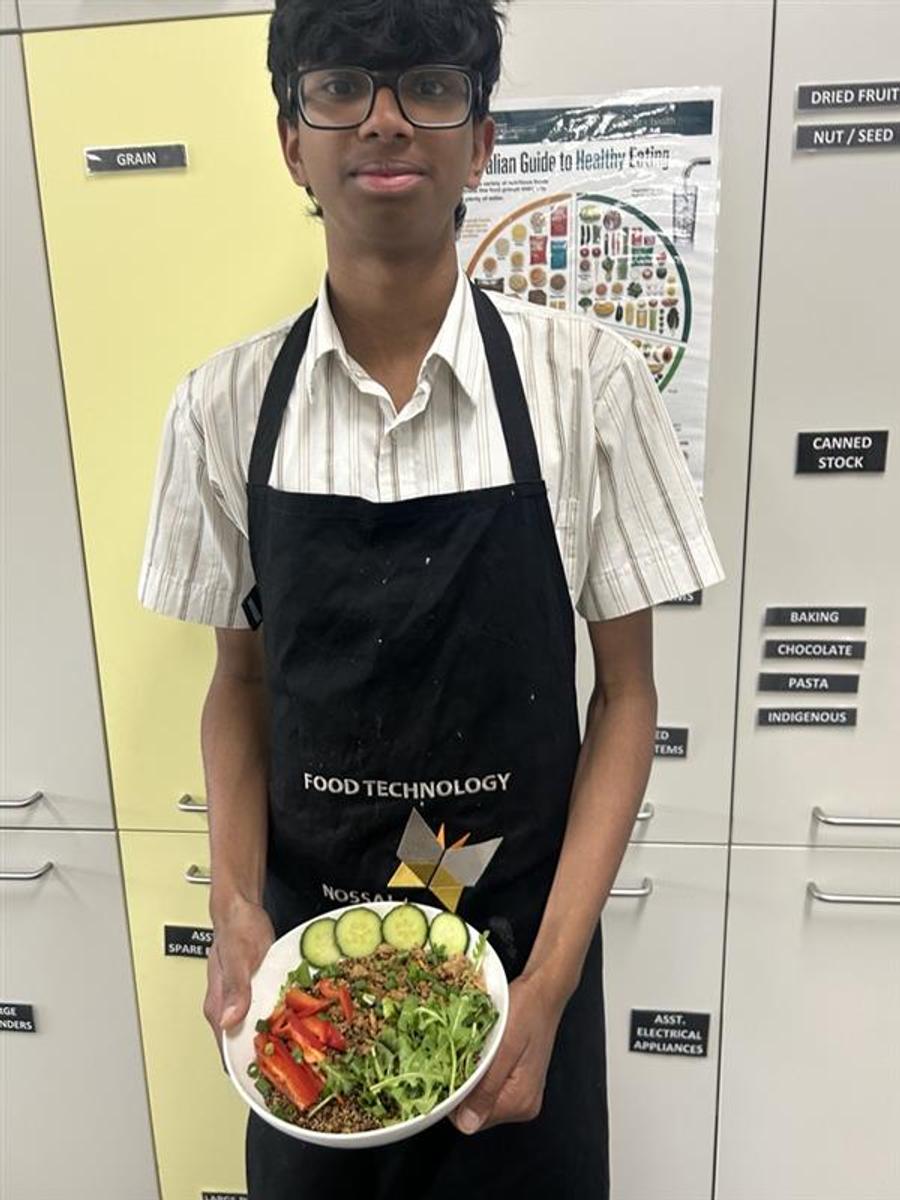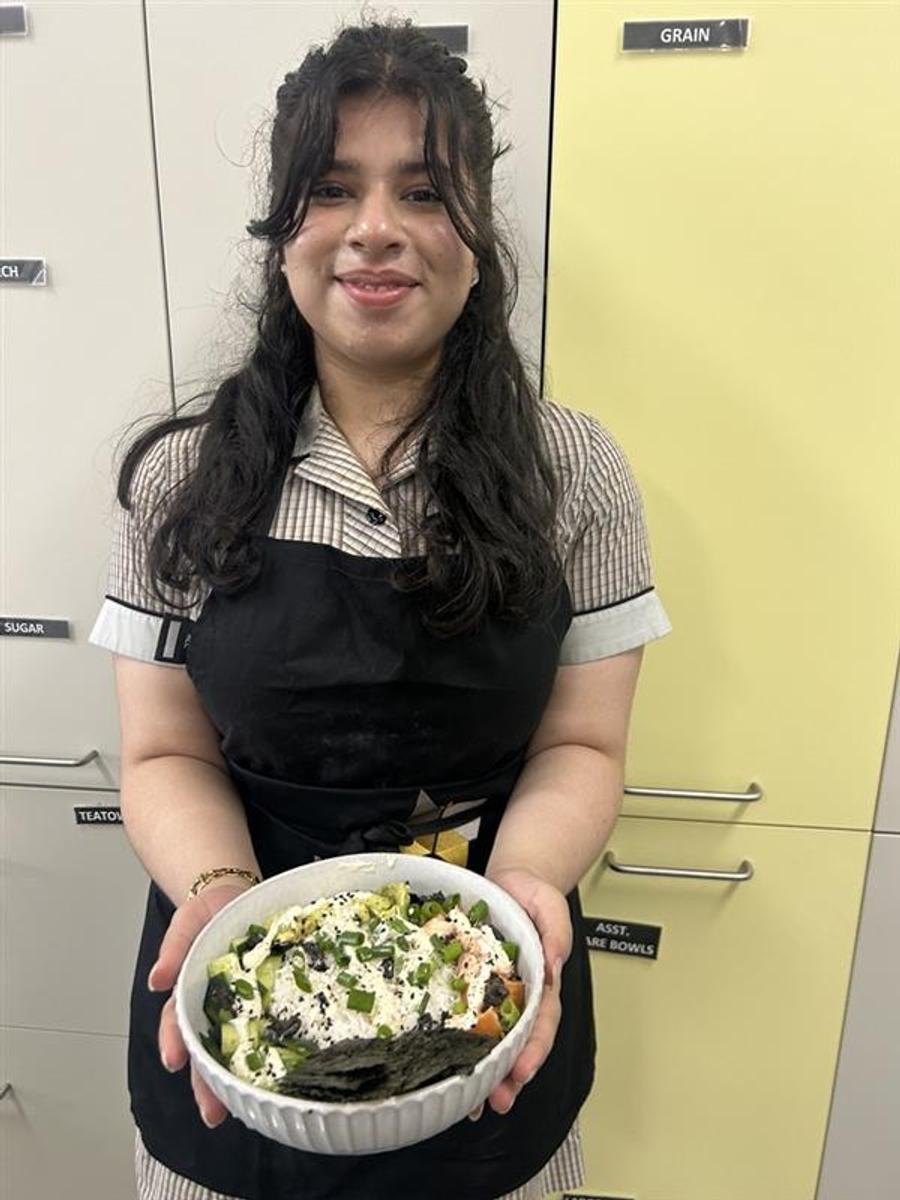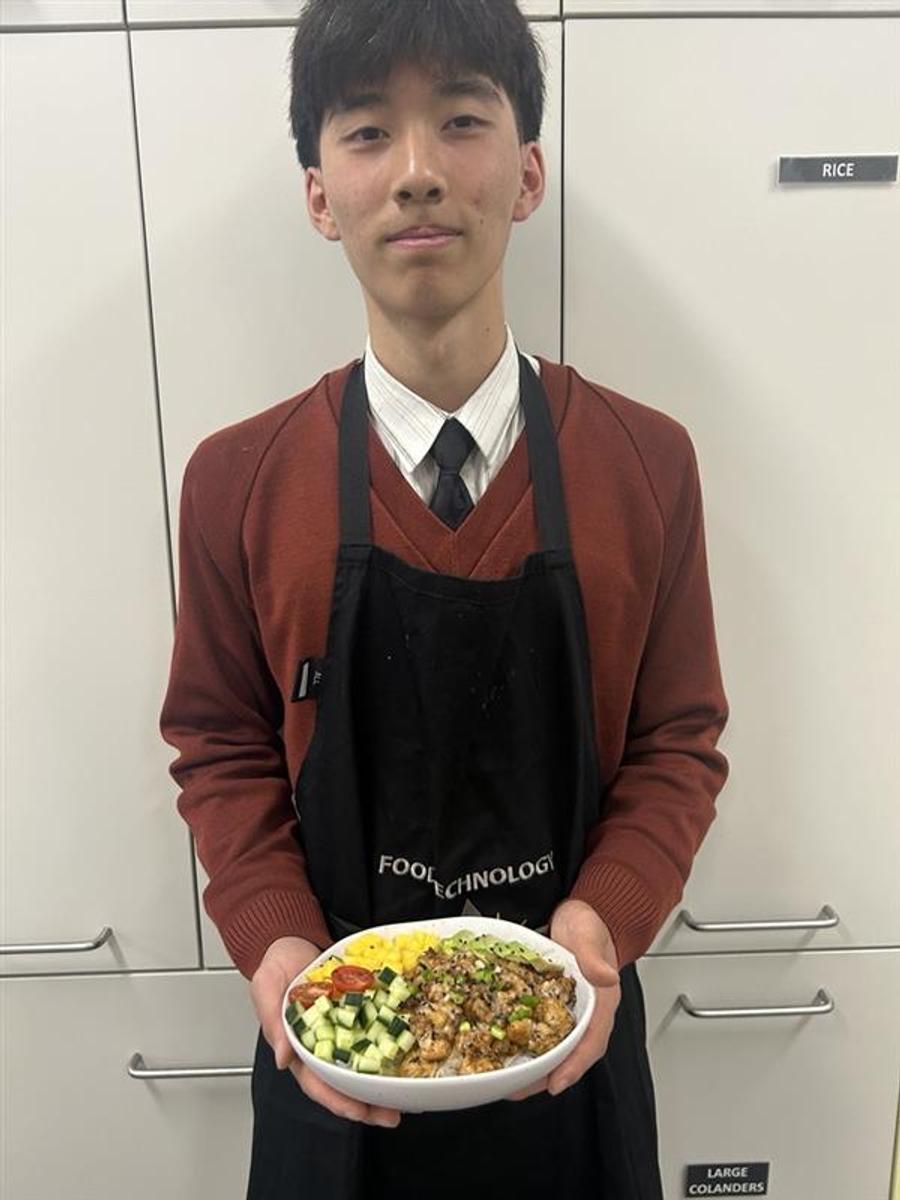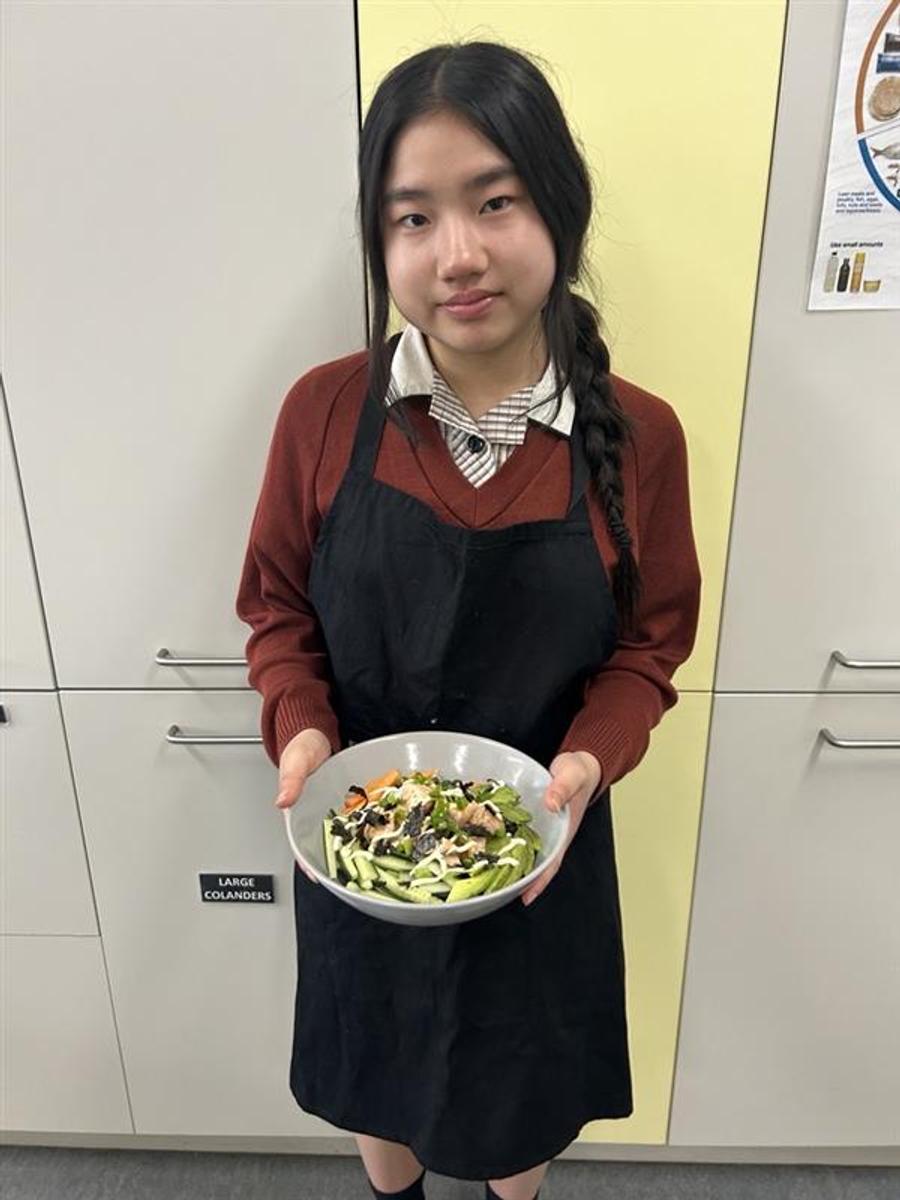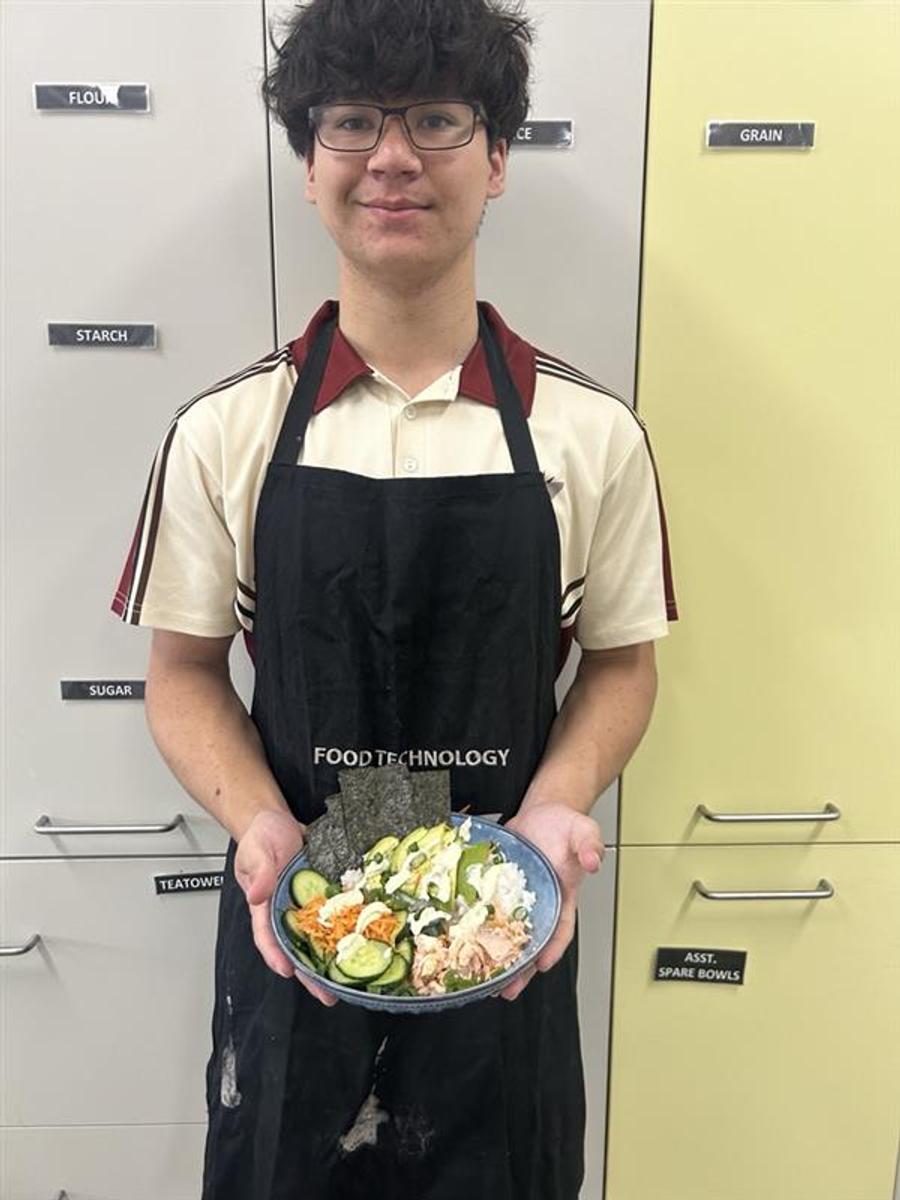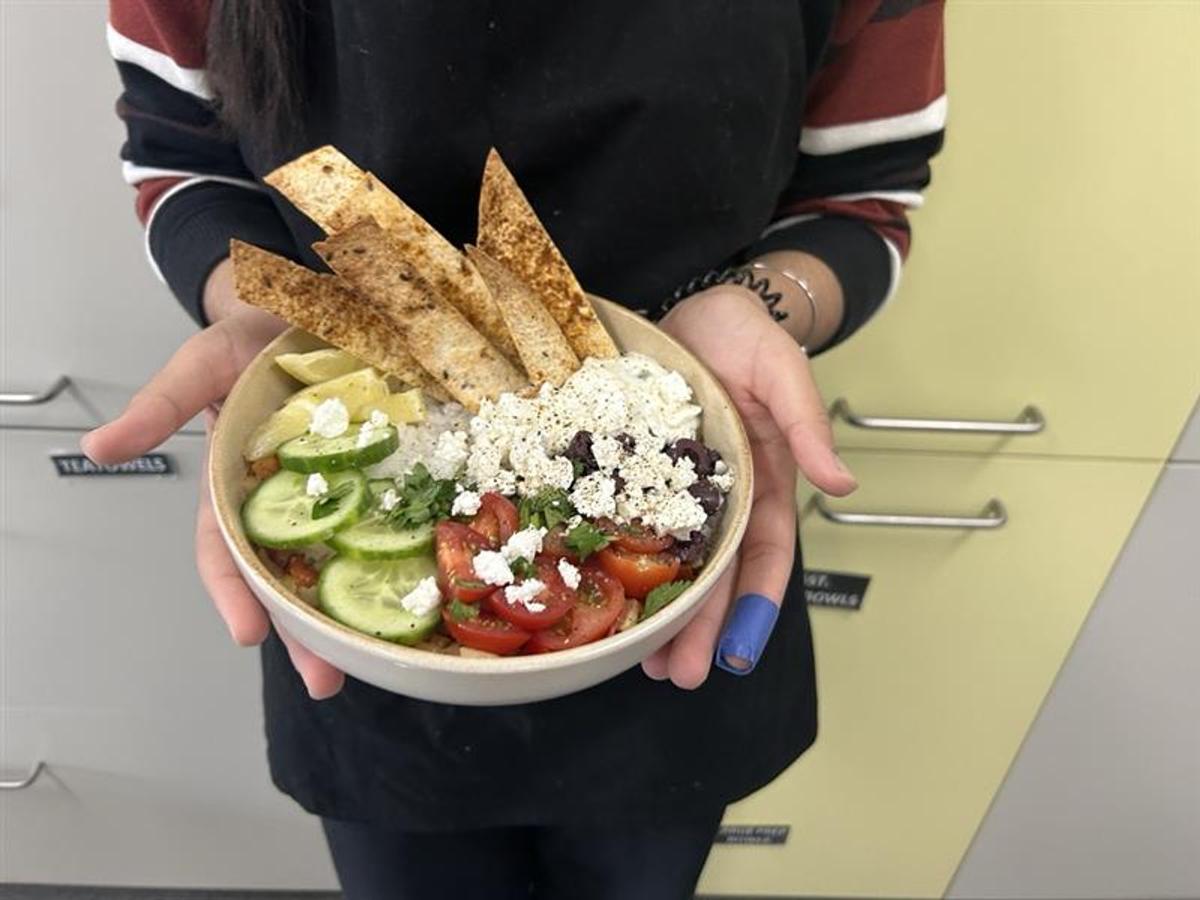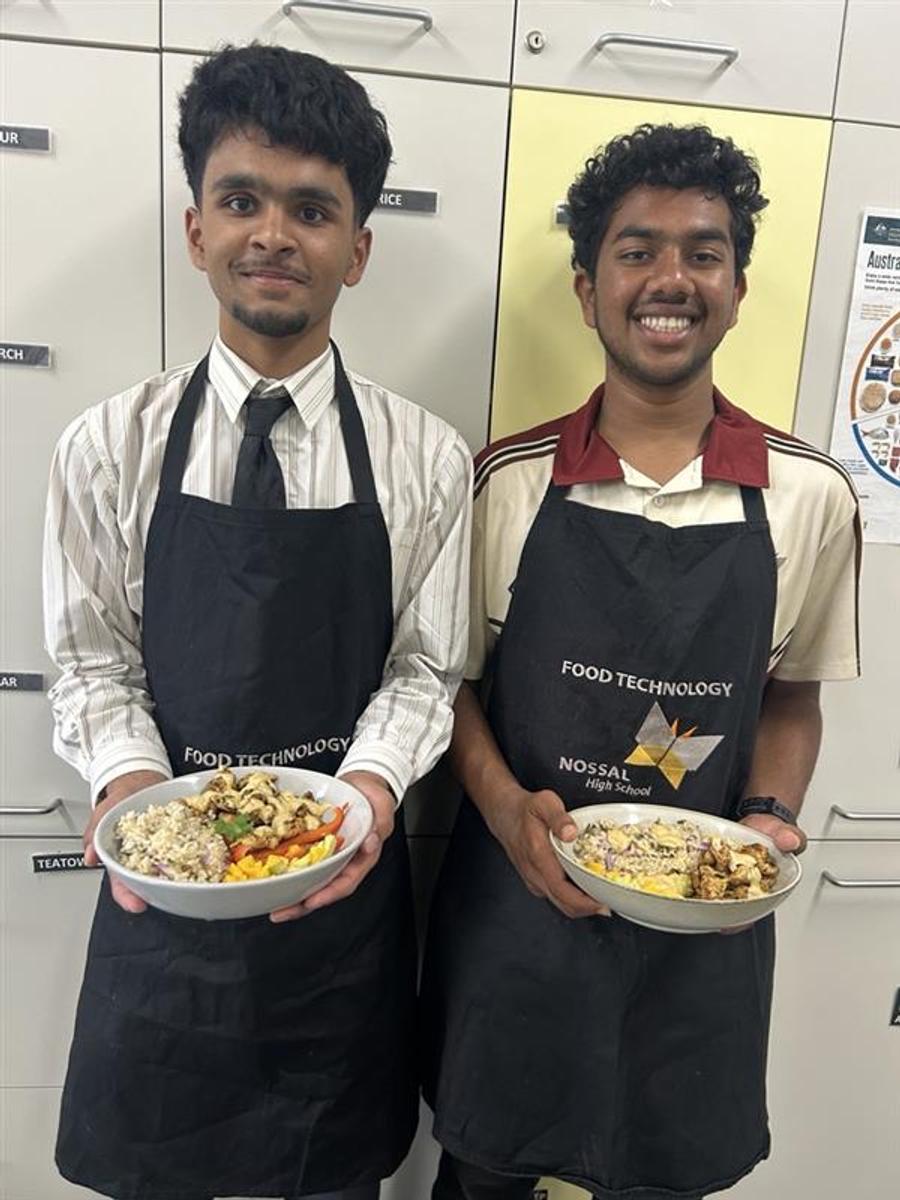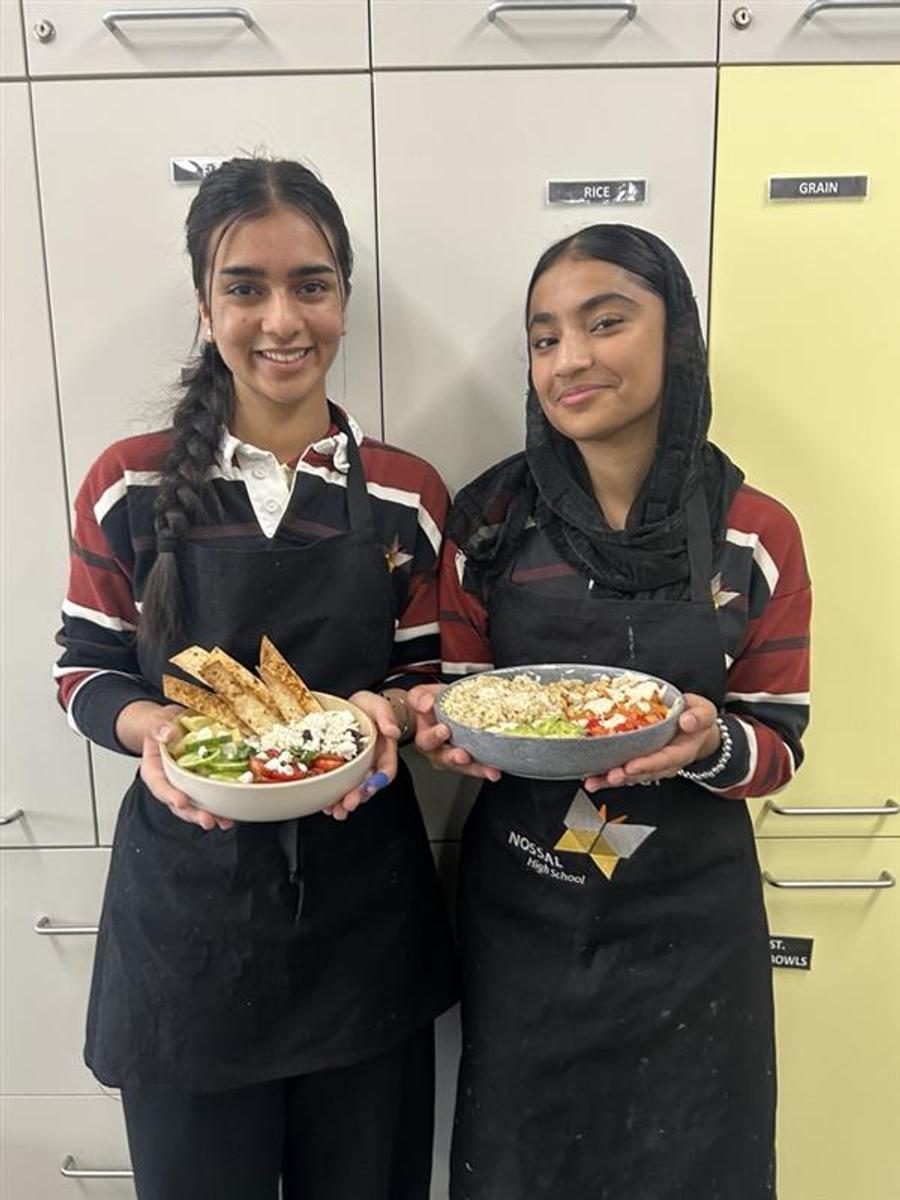Food Studies

Our year 10 food technology class was given the task to design and create a delicious and visually appealing wellness bowl that benefits the mental health of adolescents between the ages of 12-18 years.
The aim of the task was to understand the complex ways in which what we eat influences our brain, mood, and mental health. We had to research using the scientific evidence to explain the mechanisms by which diet affects mental health and unpacks the evidence concerning what constitutes a healthy diet. One of the interesting concepts that we learnt about was the gut brain axis.
Diet is now a recognised modifiable factor in the prevention and treatment of mental illness. In fact, the recently updated Australian and New Zealand College of Psychiatrists’ clinical practice guidelines for mood disorders included addressing lifestyle factors, including supporting a healthy diet, as a foundation for the treatment of mood disorders, describing this step as “essentially non-negotiable”.
These new clinical guidelines are the first in the world to recognise the importance of diet to mental health and they represent a critical step in translating our Food and Mood Centre research into widespread practice. (Looking through the lens at how food can improve our mood | Food and Mood Centre.
After completing extensive research and drawing inspiration from various existing recipes, we designed one final recipe offering nutritional diversity with an emphasis on mental health enhancement. We were afforded plenty of freedom with ingredient choice, with some students opting for roasted vegetables instead of raw or chickpeas instead of meat protein.
The morning of our practical lesson, our class was abuzz with excitement. The colourful ingredients sprawled over the main benchtop, waiting to be used in our wellness bowls. It wasn't long before everyone started rinsing their grains and preparing their meats and vegetables. The biggest challenge for many of us was figuring out how to best present our bowl, as an important design brief criterion was to ensure that adolescents would be excited to try and enjoy the meal. I know I rearranged my carrots and cucumbers at least four times before settling for my final product!
By the end of the lesson, it was clear that there was an impressive kaleidoscope of cultural influences evident in everyone's wellness bowls. Some popular choices included the Japanese salmon sushi bowl, Mexican chicken fajita bowl and the lamb souvlaki bowl. Regardless of what ingredients we chose to use, it was a highly enjoyable practical lesson with new knowledge and skills to take away!
Written by Christine Lam

